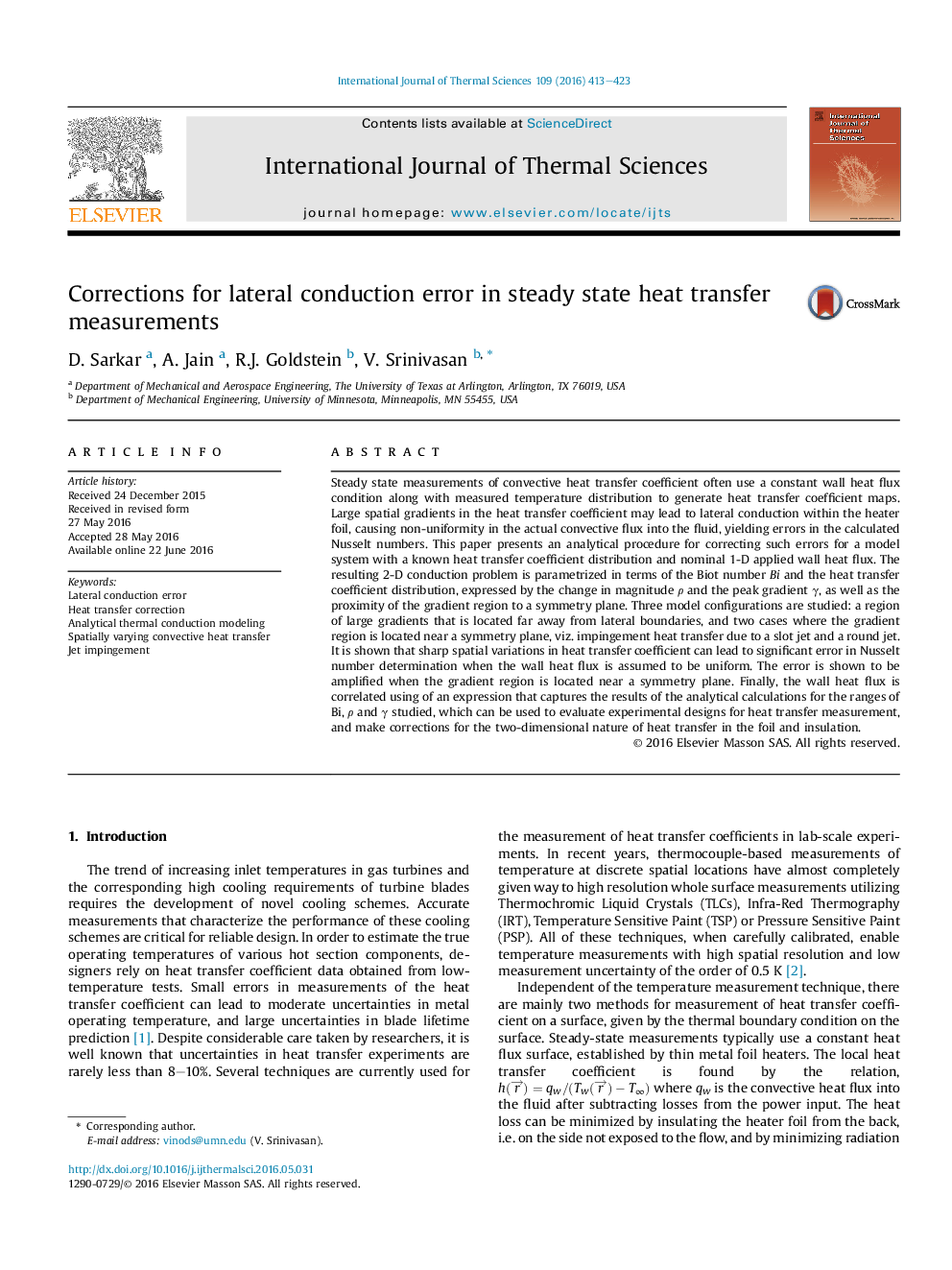| Article ID | Journal | Published Year | Pages | File Type |
|---|---|---|---|---|
| 668953 | International Journal of Thermal Sciences | 2016 | 11 Pages |
Abstract
Steady state measurements of convective heat transfer coefficient often use a constant wall heat flux condition along with measured temperature distribution to generate heat transfer coefficient maps. Large spatial gradients in the heat transfer coefficient may lead to lateral conduction within the heater foil, causing non-uniformity in the actual convective flux into the fluid, yielding errors in the calculated Nusselt numbers. This paper presents an analytical procedure for correcting such errors for a model system with a known heat transfer coefficient distribution and nominal 1-D applied wall heat flux. The resulting 2-D conduction problem is parametrized in terms of the Biot number Bi and the heat transfer coefficient distribution, expressed by the change in magnitude Ï and the peak gradient γ, as well as the proximity of the gradient region to a symmetry plane. Three model configurations are studied: a region of large gradients that is located far away from lateral boundaries, and two cases where the gradient region is located near a symmetry plane, viz. impingement heat transfer due to a slot jet and a round jet. It is shown that sharp spatial variations in heat transfer coefficient can lead to significant error in Nusselt number determination when the wall heat flux is assumed to be uniform. The error is shown to be amplified when the gradient region is located near a symmetry plane. Finally, the wall heat flux is correlated using of an expression that captures the results of the analytical calculations for the ranges of Bi, Ï and γ studied, which can be used to evaluate experimental designs for heat transfer measurement, and make corrections for the two-dimensional nature of heat transfer in the foil and insulation.
Keywords
Related Topics
Physical Sciences and Engineering
Chemical Engineering
Fluid Flow and Transfer Processes
Authors
D. Sarkar, A. Jain, R.J. Goldstein, V. Srinivasan,
